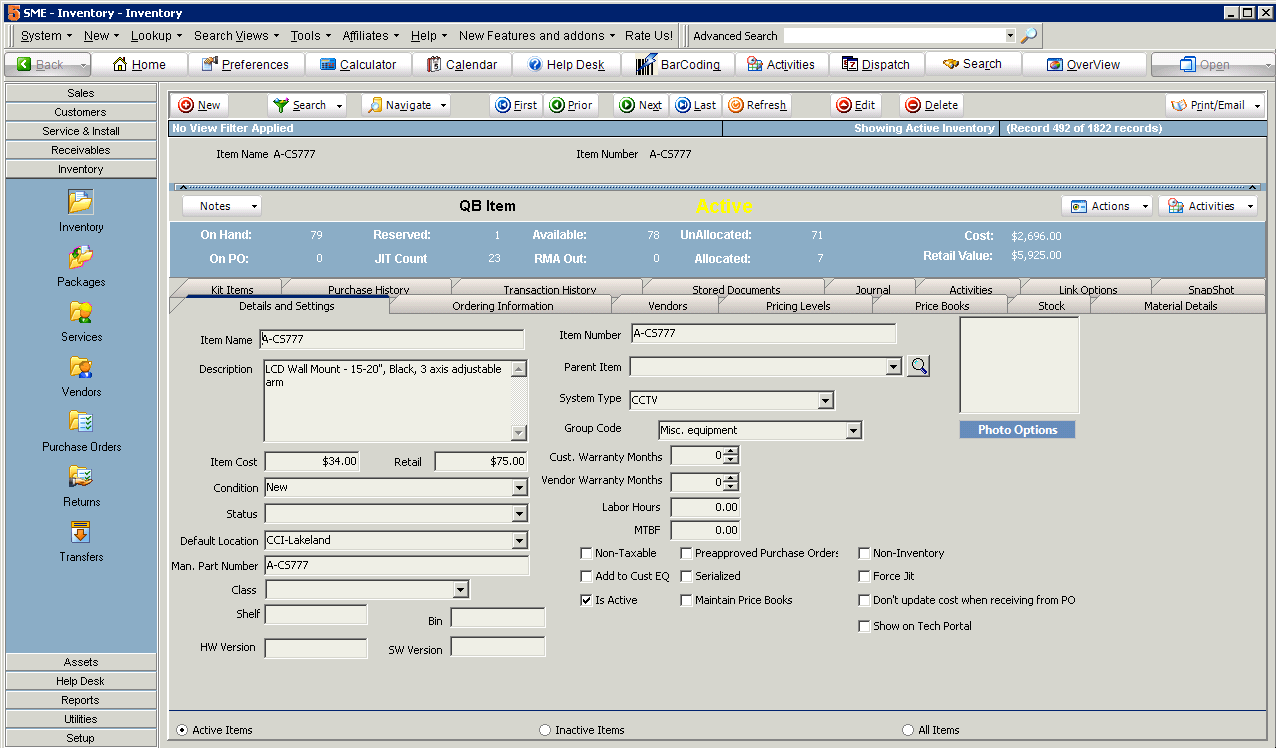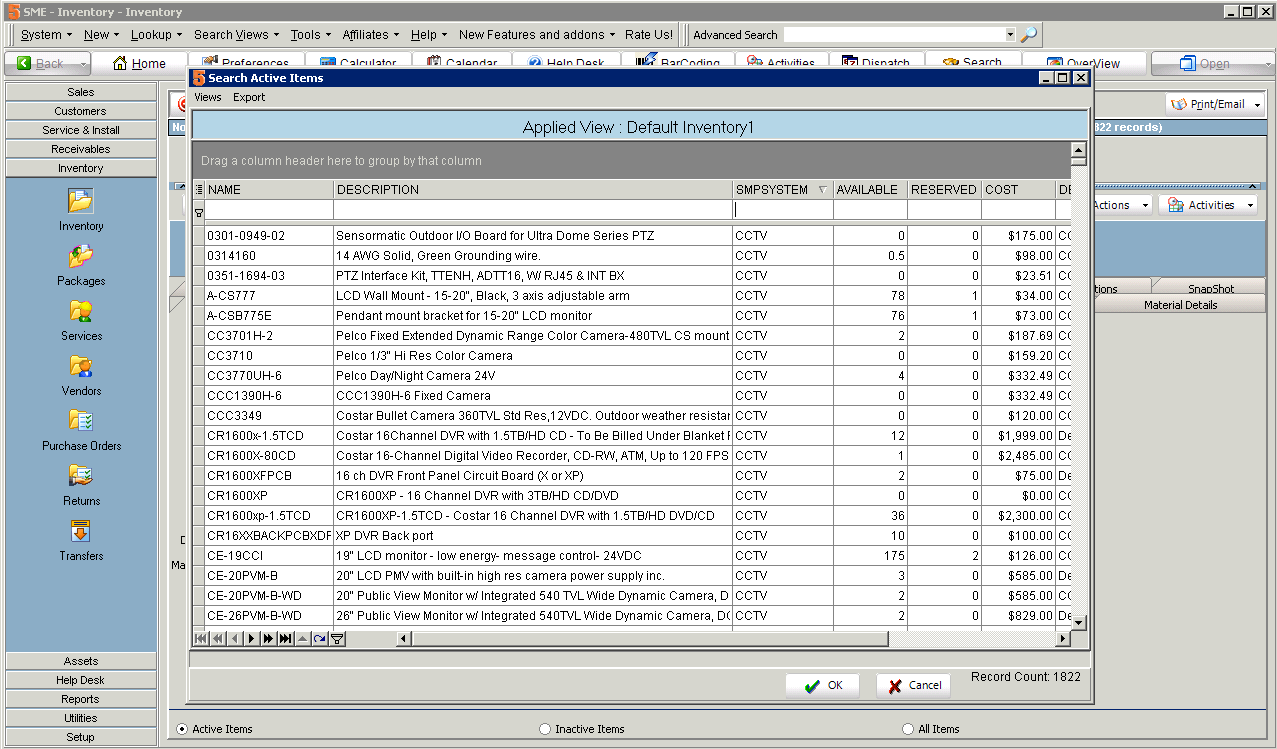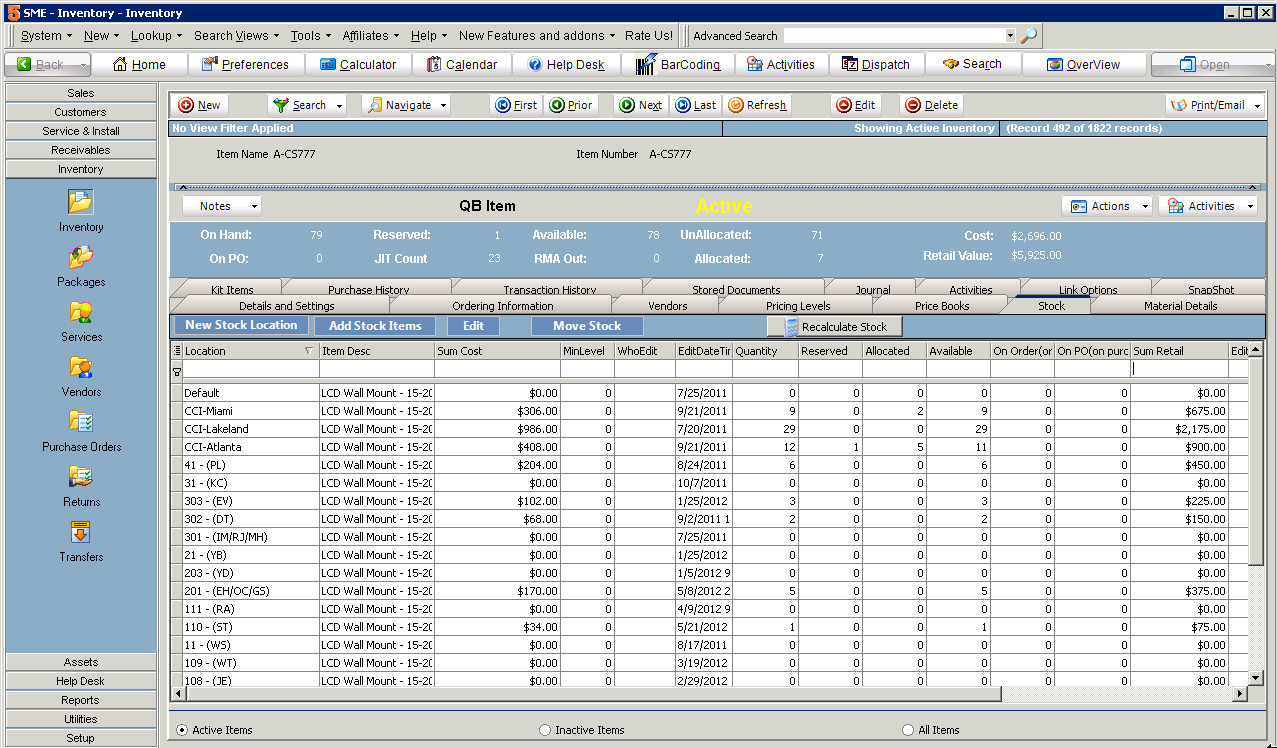Work, Service, & Install Order Management for Service Industry
High 5 Software Gives You Power To Run a Better Service Business
The Customer Module tracks every aspect of your most valuable asset, your customers. Customer records are accessible throughout the program, increasing the efficiency and productivity of your staff. For a more detailed overview on what exactly CRM is please follow this link: CRM Defined
High 5 Software Gives You Power To Run a Better Service Business
Inventory Management Control for Service Industry
Here’s one of the things that makes SME a great software for the service industry : The Inventory Module is a complete collection of comprehensive inventory control tools allowing you to quickly and easily manage your entire inventory. Full integration with the other components of SME ensures that your inventory accurately adjusts with the use of other modules. A full Parts Rolodex saves you time with detailed tracking of prices and descriptions, before they’re ordered and added to inventory. This is among your most valuable tools, using it to track competitor’s costs for bid competition. SME uses a Just-In-Time (JIT) system to fulfill orders. To learn more in depth on how JIT works, please follow this link: JIT Defined
Managing inventory takes different levels of effort depending upon the amount of inventory control you want for your company. SME does LOTS of automation to automatically handle many of the steps and business process, however if you want complex inventory control, it will require more effort from inventory personnel. SME will handle any of the level of inventory control you want for your business. You can also start with simple inventory control and get more elaborate as your business needs by adding warehouses and serialized inventory tracking.
Here is a list of amount of inventory management required based upon how much inventory control you want from least amount of effort to most amount:
- Don’t track any stock and everything is just JIT. This requires no additional effort or management, but also you would not know how much stock you have.
- Normal inventory stock management with one warehouse. This requires someone to track inventory allocations, manage PO’s and make sure allocations are made if for example you added something that doesn’t exist to an order now and then do an independent PO later.
- Inventory stock with multiple warehouse. Requires the above plus making sure inventory pulled and added to correct warehouse and requires transfers between warehouses.
- Serialized inventory with multiple warehouses. Requires serial number tracking from PO receipt all the way through system
- Serialized, multiple warehouse, and strict inventory control. Requires the most management
For additional information about the Inventory Module or other modules in SME, use the contact form below and we will get back to you ASAP.
Screenshots:



Inventory
In the Inventory section of the Inventory module you can setup and access all inventory items. View stock for the item, move stock between warehouses, view item purchase history, and setup ordering information for the item. You can also initiate a PO from the inventory item.
Services
Service items can be used for a variety of purposes such as fixed rate type services, services to be performed by subcontractors, or other service type items such as freight & shipping. Some companies using SME use service items for all charges to customers and only use labor items for scheduling purposes. Other companies use service items for subcontractors with the cost being the amount they pay the subcontractor and the price the amount they charge to the customer. Notice that service items include multiple descriptions; these can be used for different purposes. For example, the Service Description can be used for the technician or subcontractor while the Invoice description is used for the customer invoice.
Vendors
A vendor supplies goods and services to your company. In SME, vendors include both vendors who supply material to your company and subcontractors who supply services to your company. Vendors are used for purchase orders, RMA returns, and as defaults for inventory items. The vendor module also tracks past Products Purchased and Purchase Orders ordered from the vendor.
Features:
- Detailed tracking of inventory
- Combine items into packages
- Store and track vendor info
- Track returned inventory
- Track purchase orders
- View the complete selling and purchase order history
- Extensive note taking ability for all inventory items, packages, vendors, billing, shipping, and anything that needs referencing
- Price variation by part number
- Available and committed stock summaries
- Minimum level and reorder settings
- Detailed inventory control with multiple warehousing (inventory locations) capabilities
- Bar code scanning
- Photo options to help inventory item differentiation
- Designate individual items as delivered, pending or on hold
Benefits:
- Define detailed order information for your inventory item, such as stock and order levels, manufacturer and preferred vendor
- Set pricing levels and markup, including Automatic Markup, which automatically adjusts your sales price based on cost increases
- Enter individual or a range of serial numbers for more detailed stock tracking
- Combine individual inventory items into packages to allow for special pricing and easier processing of invoices and orders
- Have account, billing, item, customer and all information needed readily available on the same screen
- A complete list of products each vendor carries, including their pricing and lead time
- Print inventory lists by name, location, system type, and minimum levels, plus many detailed parts reports. Print purchase orders and reports
